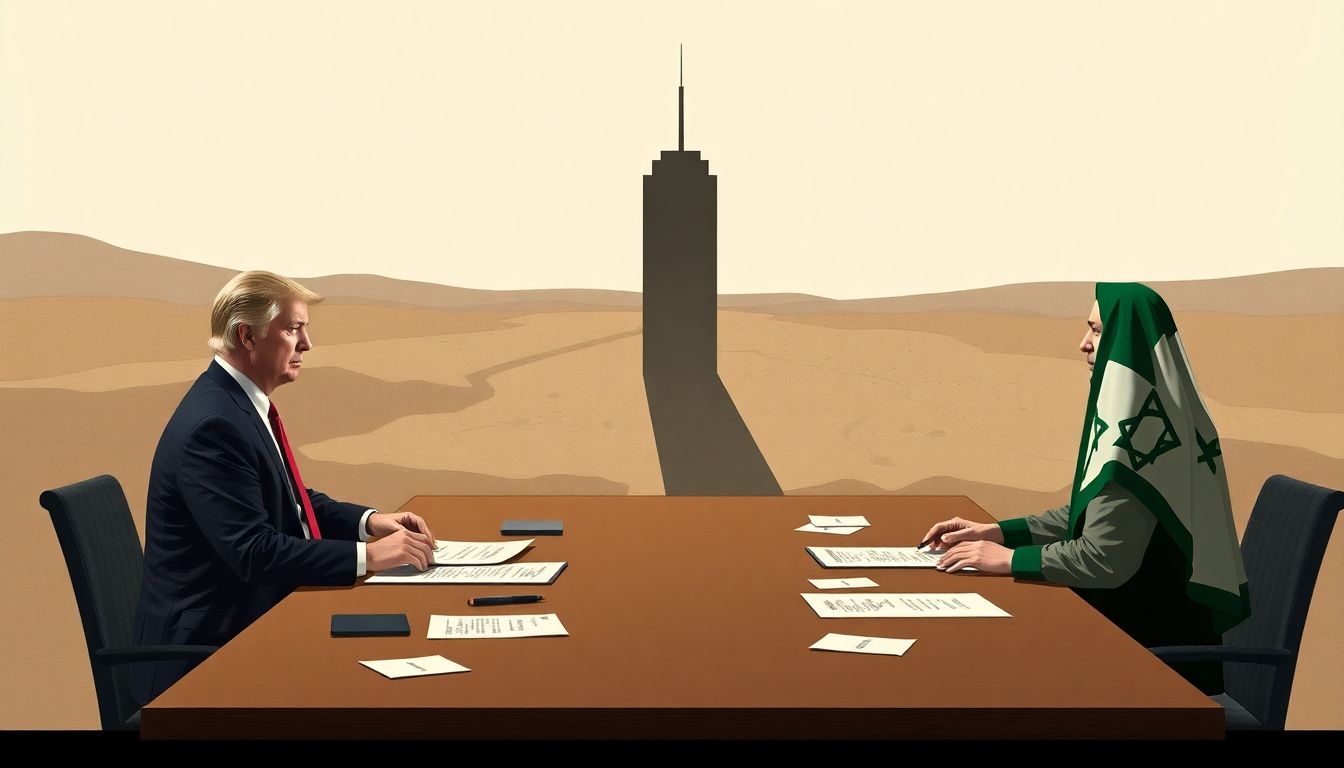
An unexpected breakthrough has shaken the long-standing tensions in the Israeli-Palestinian conflict. Israel and Hamas have signed a historic deal, signaling a potential shift towards peace in a region long plagued by violence. This agreement comes amidst significant pressure from former President Trump on Israeli Prime Minister Netanyahu.
The Surprise Announcement: Key Details and Initial Reactions
The signing of the deal took many by surprise. Both sides detailed essential agreements regarding security measures, borders, and settlements. Initial reactions to the deal were mixed, with some praising it as a step towards stability, while others criticized it as insufficient for a lasting resolution.
- Headlines spanned global news outlets.
- Social media flooded with opinions.
- Public demonstrations occurred, both for and against the agreement.
Trump's Role: A Catalyst for Peace or a Political Maneuver?
Trump's involvement in the deal raised eyebrows. Some view him as a peace broker, while others see it as a political strategy. His direct appeal to Netanyahu seemed to create a window for negotiations.
- Was it genuine support for peace?
- Or a way to secure political capital?
His influence cannot be overstated, but the ultimate test remains the implementation of the agreement.
Setting the Stage: Years of Conflict and Failed Negotiations
For decades, Israel and Hamas have faced deep-rooted issues. Past negotiations have often failed, leaving a legacy of distrust.
- Numerous ceasefires broke down.
- Each side accused the other of bad faith.
This new deal emerges from years of frustration and a desire for change.
Understanding the Deal's Provisions: A Comprehensive Analysis
Key Terms and Agreements: Security, Borders, and Settlements
The deal outlines specific provisions regarding:
- Security: Measures to ensure safety for both Israelis and Palestinians.
- Borders: Clear demarcation to restore territorial claims.
- Settlements: A roadmap for handling existing settlements.
These components must align with both sides' political realities to succeed.
The Role of International Observers and Mediators
International observers will play a crucial role in monitoring compliance. Their oversight aims to build trust and ensure that both parties uphold the agreement.
Potential Economic Implications for Both Sides
Economic benefits could arise from this deal. Cooperation may lead to:
- Increased trade opportunities.
- Infrastructure development.
- Boosted tourism in the region.
This economic angle might create a vested interest in maintaining peace.
Analyzing the Impact on Regional Stability: A Geopolitical Perspective
Shifting Alliances and Power Dynamics in the Middle East
This deal might alter alliances in the Middle East. Countries that support either side could reevaluate their positions.
Reactions from Neighboring Countries and International Organizations
Neighboring nations and organizations like the UN are observing closely:
- Some welcome the agreement as a peace breakthrough.
- Others express skepticism about its longevity.
The Long-Term Implications for Peace in the Region
The implications of this deal are vast. It raises the question of whether this is a true turning point or just another temporary fix.
Domestic Reactions and Political Fallout: Both Israel and Palestine
Netanyahu's Political Standing and Public Opinion in Israel
For Netanyahu, this deal could bolster his political position. However, public opinion remains divided. Polls indicate a mix of hope and skepticism among Israeli citizens.
Internal Divisions Within Hamas and the Palestinian Authority
Hamas faces its internal struggles. The agreement may deepen divisions between factions, affecting its political strategy moving forward.
The Role of Civil Society and Media in Shaping Public Discourse
Media and civil organizations are crucial for shaping public opinion. Their portrayal of the deal will significantly influence how the public perceives this step toward peace.
Challenges and Uncertainties Ahead: Obstacles to Lasting Peace
Implementation Challenges and Potential Roadblocks
The path to implementing the deal is fraught with challenges. Key issues include:
- Ensuring compliance from both sides.
- Addressing violence that may erupt during the transition.
Ensuring Accountability and Preventing Future Violations
Accountability mechanisms will be essential. Failing to implement checks and balances could lead to a repeat of past failures.
The Path Forward: Sustaining Peace and Addressing Underlying Issues
Sustaining peace requires addressing unresolved historical grievances. Efforts must focus on dialogue and reconciliation.
Conclusion: A Fragile Peace and the Road Ahead
Key Takeaways: What the Deal Means for Israel, Palestine, and the Region
This agreement marks a pivotal moment for Israel and Hamas. While it offers hope for a peaceful future, there are many hurdles to clear.
Looking Ahead: The Challenges and Opportunities for Lasting Peace
Future challenges will test the durability of this deal. Success depends on cooperation, patience, and mutual respect.
The Importance of Continued International Engagement and Support
International support is vital for fostering peace. Continuous engagement will help both sides navigate this complex journey toward stability.
https://newfactsonly.blogspot.com/
.png)
.png)
.png)
